Al Wasl Building: A Key Structure in Dubai's Skyline
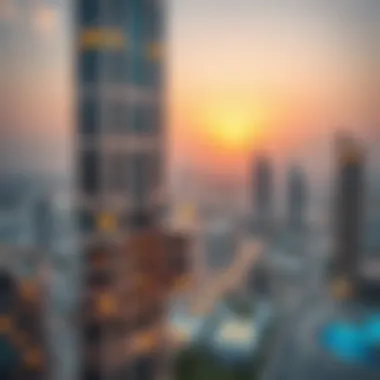
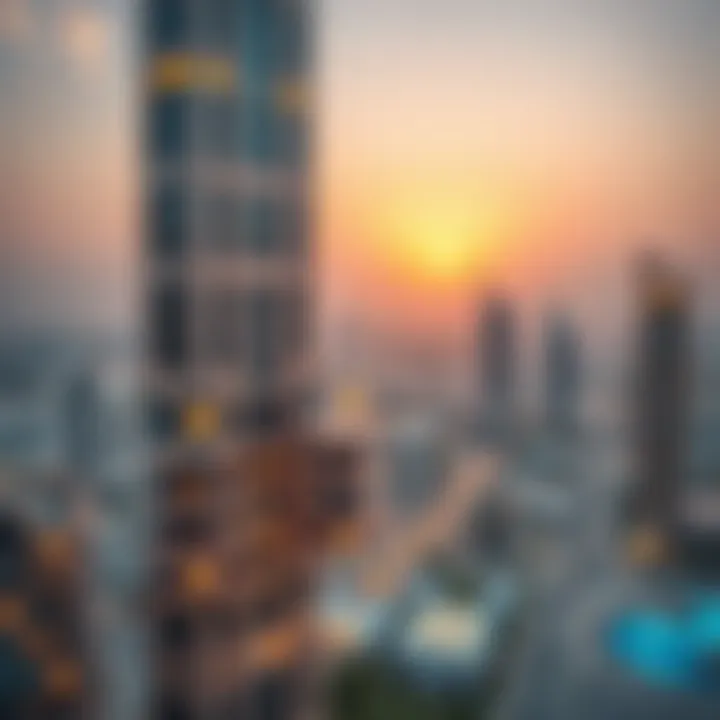
Intro
Dubai is a city where innovation meets culture, and architectural marvels tell stories of ambition and progress. Among these structures, the Al Wasl Building emerges as a key player in redefining the architectural landscape of this vibrant metropolis. This article dives deeply into the intricacies of the Al Wasl Building, focusing not just on its unique design but also on its broader implications in Dubai's urban tapestry.
From its striking aesthetics to its historical roots, understanding the Al Wasl Building is essential for comprehending Dubai’s fast-paced evolution. We will explore how it intertwines with the emirate's identity, guiding both local residents and potential investors through this remarkable structure. Ali Ababzadeh, a prominent architect in Dubai, once stated, "A building is not just walls; it's a canvas reflecting cultural values and economic aspirations.”
As we progress, insights into market trends and investment potentials related to Al Wasl Building will become apparent. Grasping these elements will equip stakeholders with the knowledge needed to navigate present-day opportunities in time of rapid urbanization.
By providing a comprehensive overview, this piece aims to unveil the narratives surrounding the Al Wasl Building while illuminating its significance in the thriving Dubai real estate market.
Intro to Al Wasl Building
The Al Wasl Building is not just another structure in Dubai's skyline; it symbolizes the grandeur and ambition of a city that thrives on innovation and architectural excellence. Its significance stretches beyond mere aesthetics, speaking to the heart of what Dubai represents in today’s urban landscape. In this section, we’ll delve into the important facets of the Al Wasl Building, examining its architectural stature, cultural importance, and how it fits within the ever-evolving fabric of Dubai’s real estate domain.
Overview of its Significance
The Al Wasl Building stands as a testament to Dubai’s rapid development. Ever since its inception, this structure has acted as a cornerstone for community engagement, offering a space where local culture shines amidst a backdrop of modern design. The importance of this building cannot be understated for several reasons:
- Architectural Identity: Its unique design sets it apart, showcasing innovative engineering and creative vision.
- Cultural Hub: The facility is not merely about living or working; it encourages interaction among residents, making it a thriving center of community life.
- Economic Catalyst: By attracting investments and fostering tourism, the Al Wasl Building plays a pivotal role in bolstering the local economy.
Understanding these elements leads to a deeper appreciation of how the Al Wasl Building fits into Dubai’s ambitious plans for growth and urban transformation.
Historical Background
The history of the Al Wasl Building is a reflection of Dubai's own metamorphosis over the decades. Originally conceived as part of a larger development vision, the building represents a blend of the past and the future. Construction began at a time when Dubai was firmly establishing itself on the world stage, and the choice of location was strategic—situated at a nexus of cultural and economic activity, it exemplifies the city's aspirations.
Historically, this area was known for its vibrant markets and community gatherings. With the emergence of the Al Wasl Building, this rich cultural heritage was preserved and enhanced. The blend of traditional influences with a modern architectural approach symbolizes a city that respects its roots while ambitiously looking ahead.
As the building neared completion, it became clear that it would play an integral role in shaping the perceptions of Dubai, offering locals and tourists alike a new landmark to marvel at, expanding the narrative of what urban living means in this city.
Architectural Design
The architectural design of the Al Wasl Building serves as a critical cornerstone in understanding its presence within Dubai's rapidly evolving urban landscape. This section not only delves into the aesthetic allure but also explores the practical implications tied to structural integrity and functionality. In a city where skyscrapers dominate the skyline, the Al Wasl Building distinguishes itself through its innovative design solutions and thoughtful incorporation of cultural elements.
Structural Features
The robust structural features of the Al Wasl Building are a testament to modern engineering accompanied by traditional influences. One notable aspect is the building’s unique facade, which is designed to interact with the natural flow of light. Large windows not only flood the interior with abundant sunlight but also minimize the need for artificial lighting during the day. Additionally, the use of reinforced concrete and a steel framework ensures durability against harsh weather conditions, a necessity given Dubai’s arid climate.
"The real challenge lies not just in aesthetic appeal, but also in creating structures that withstand the test of time."
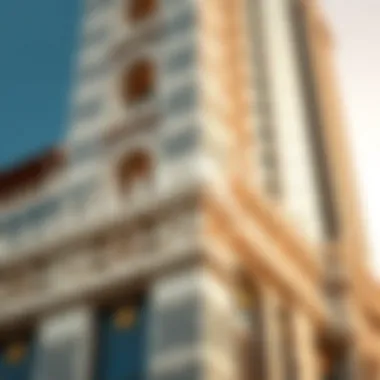
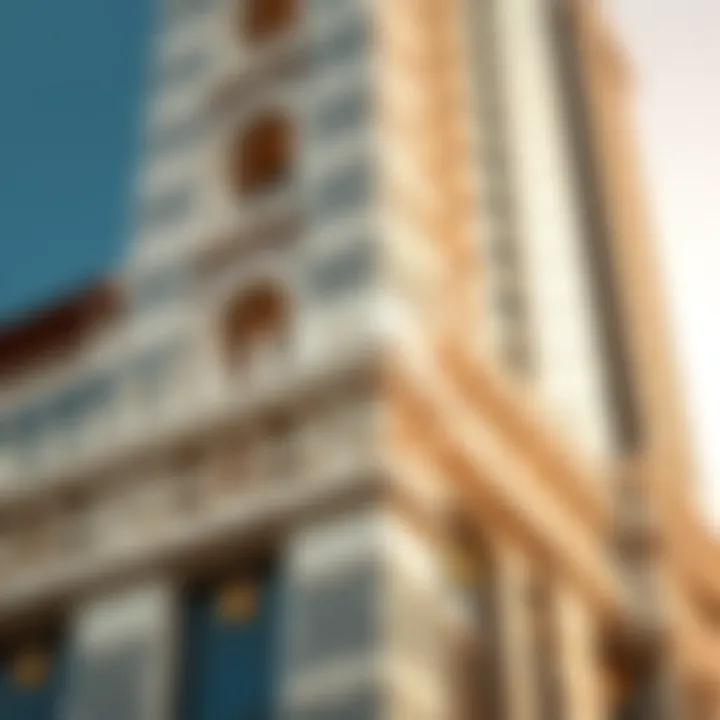
The building also incorporates cantilevered balconies, providing both visual interest and practical outdoor spaces for tenants. These features contribute significantly to the overall livability of the building, catering to the needs of both residents and commercial tenants.
Materials Used
A closer look at the materials employed reveals a commitment to both aesthetic quality and practicality. The Al Wasl Building prominently features locally-sourced sandblasted stone, enabling a harmonious blend with its surrounding environment. This choice not only supports the regional economy but also emphasizes sustainability by reducing transportation footprints. In some areas, glass elements have been meticulously chosen for their thermal properties, helping regulate indoor temperatures efficiently.
Moreover, the integration of smart materials—like those that change color based on temperature—adds a dynamic visual aspect while improving energy efficiency. Such considerations show that the building is not merely a structure but a living entity that adapts and responds to its surroundings, catering to modern sustainability demands.
Innovative Techniques Employed
Innovation plays a pivotal role in the design and construction processes of the Al Wasl Building. One such technique is the use of advanced Building Information Modeling (BIM), which allows for precise architectural visualization and seamless project management. This method ensures that any potential issues can be addressed before they arise, ultimately leading to cost and time savings for developers.
Additionally, water management systems integrated into the building design allow for rainwater harvesting, demonstrating a proactive approach to environmental stewardship. The incorporation of bio-filters has also been considered to maintain air quality, promoting a healthier atmosphere for occupants.
In the grand scheme of Dubai’s architectural advancements, the Al Wasl Building stands out not only for its external beauty but also for its sophisticated integration of technology and eco-friendly practices, setting a benchmark for future developments in the city.
Cultural and Societal Context
Understanding the cultural and societal context of the Al Wasl Building is essential for grasping its role in Dubai’s rapidly evolving urban tapestry. While its architectural brilliance might capture the eye, it is the building's influence on community dynamics and cultural identity that gives it true significance. The Al Wasl Building doesn’t merely stand as a monument of glass and steel; it represents a melding of the past, present, and future of Dubai.
Impact on Local Community
The Al Wasl Building plays a substantial role in the local community, serving as more than just a place of business or living. It acts as a hub for connection, engagement, and interaction. For many residents, this building is a part of their everyday life, offering spaces where people can meet, collaborate, and share ideas.
- Community Engagement: Regular events and activities hosted in or around the building foster a vibrant sense of community. These events range from art exhibitions to cultural festivals, which not only showcase local talent but also enrich the cultural fabric of the area.
- Economic Revitalization: The business spaces within the Al Wasl Building attract startups and established businesses alike, contributing to economic growth. Local shops and services benefit from the increased foot traffic, leading to an overall boost in community livelihood.
- Social Responsibility: Moreover, the building often partners with local charities, reinforcing a sense of responsibility among its tenants. Initiatives aimed at giving back to the area help strengthen relationships with community members, cultivating a supportive atmosphere.
The Al Wasl Building symbolizes a commitment to community upliftment and cultural enrichment, reflecting the aspirations of Dubai’s dynamic populace.
Cultural Significance
When we think about buildings in Dubai, we often picture luxury and modernity. However, the Al Wasl Building is a testament to how architecture can embody a city’s culture and identity. It stands as a backdrop where diverse stories unfold.
- Cultural Symbolism: Its design elements pay homage to traditional Arabic architecture, blending them seamlessly with modern aesthetics. This nod to heritage is crucial in a city that balances innovation with tradition.
- An Architectural Icon: With its unique form and function, the building has become a recognizable landmark. It holds a position of pride that fosters a sense of belonging and identity for residents. Iconic structures like this contribute to the unique narrative that is distinctly Dubai.
- Fusion of Cultures: Inside the Al Wasl Building, one finds a mix of cultures represented through various businesses and public spaces. This encourages interaction among residents of different backgrounds, promoting tolerance, and understanding.
Real Estate Market Implications
Understanding the real estate market implications of the Al Wasl Building is vital for anyone with a stake in Dubai's urban development. This structure serves not only as an architectural landmark but also plays a pivotal role in informing market trends, potential investment prospects, and how it compares with other developments in the bustling landscape of Dubai.
Trends in Property Value
The property value surrounding the Al Wasl Building has experienced notable shifts over the years. Initially, investments here may have seemed akin to catching wind in a jar; unsure and unpredictable. Yet, trends have shown considerable upward trajectories in property pricing due to factors like renewed interest within the community and enhanced features that the building provides.
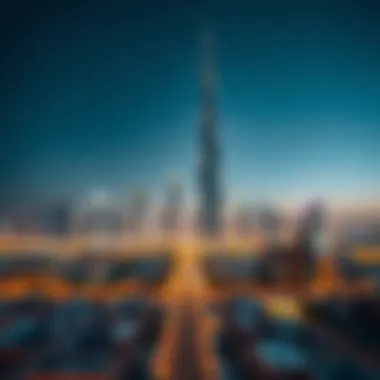
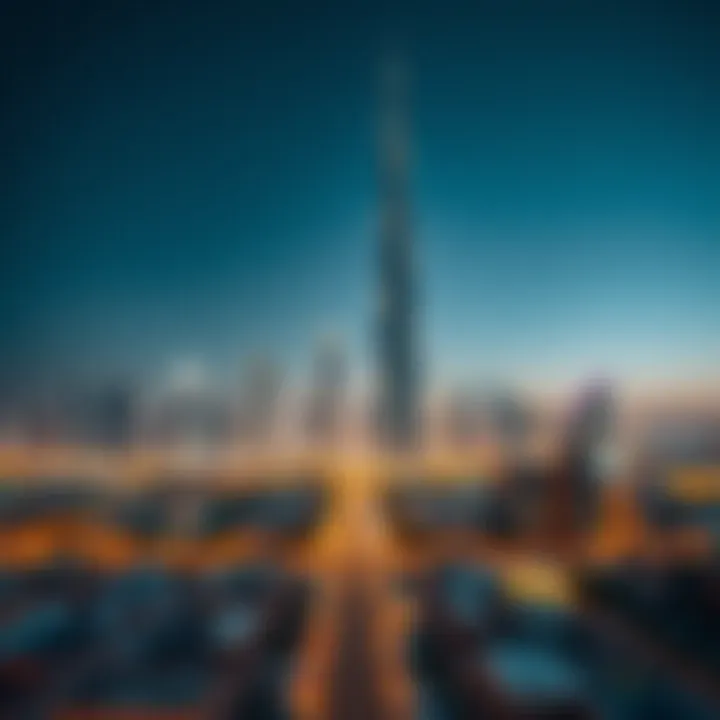
Recent data suggests that properties within proximity to the Al Wasl Building have averaged a property value increase of around 15% more than other regions in Dubai’s real estate market. This surge can be attributed to the building's unique architectural stature and its promotion of community-centric living experiences.
Moreover, with ongoing developments in infrastructure and connectivity around the building, potential buyers are recognizing the long-term value it brings to the table. Keeping an eye on market forecasts, particularly from local analysts, can reveal promising trends for prospective buyers and sellers alike.
Investment Opportunities
The Al Wasl Building encapsulates a goldmine of investment opportunities for savvy stakeholders. Investors should not view this structure in isolation but rather as a gateway into the flourishing landscape that Dubai offers. It’s as if this building is a key turning a lock, unlocking various possibilities in real estate growth.
A few worthy mentions of investment avenues include:
- Residential Leasing: With demand for residential units skyrocketing, properties for lease within the building promise attractive returns.
- Commercial Ventures: Retail spaces in or adjacent to the Al Wasl Building have been largely sought-after, catering to the increasing number of tourists and residents in the area.
- Event Spaces: Given its architectural allure, several businesses are considering partnerships for hosting events, offering lucrative business ventures.
Relying on reliable market research and consulting with seasoned real estate agents familiarized with this locale remains crucial. The proactive approach can further highlight unmissable investment chances present within this thriving environment.
Comparative Analysis with Other Developments
While the Al Wasl Building holds its ground firmly in the Dubai skyline, analyzing it against other developments can give valuable context. It's akin to comparing apples to oranges; both are fruit but differ boldly in taste and appeal.
When we juxtapose the Al Wasl Building with nearby projects like Burj Khalifa or The Dubai Mall, certain differences emerge:
- Architectural Identity: Unlike the glassy facade of Burj Khalifa, the Al Wasl Building embraces local aesthetics while incorporating modern elements.
- Accessibility: The building’s thoughtful integration with local transport systems enhances its attractiveness, a level of planning not uniformly applied across other developments.
- Community Integration: The Al Wasl Building has received accolades for its dedication to community-based enhancements. In contrast, developments like The Dubai Mall often cater more to tourism and consumerism.
Putting all these variables together gives a rounded view of where the Al Wasl Building stands, not only as a physical space but as a cornerstone of evolving real estate perspectives in Dubai. As the city continues to morph, remaining aware of such developments ensures that investors and residents alike can navigate the shifting sands of the market with confidence.
This holistic understanding of the Al Wasl Building’s implications on the real estate market gives stakeholders the necessary insights to make informed and strategic decisions.
Environmental Considerations
When examining the Al Wasl Building, one cannot overlook the vital role environmental considerations play in modern architecture. With the increasing awareness of climate change and urban pollution, the integration of eco-friendly practices is not just preferable but essential. The Al Wasl Building serves as a barometer of how architecture can align with sustainability goals while maintaining aesthetic and functional integrity. Not only does it reflect a shift in design philosophy, but it also sets a standard for future developments in Dubai's rapidly evolving skyline.
Sustainability Practices
The Al Wasl Building is emblematic of sustainability in operation and design. Aspects such as rainwater harvesting and the installation of green roofs demonstrate a concerted effort toward minimizing the building’s ecological footprint.
- Rainwater Harvesting: This system captures rainwater, which can be reused for irrigation or plumbing needs, diminishing reliance on municipal water supplies.
- Green Roofs: The presence of vegetation atop the structure aids in insulation while contributing to reducing urban heat, creating a microhabitat conducive for wildlife and improving air quality.
Additionally, the use of recycled materials in its construction not only reduces waste but also promotes a circular economy approach. For instance, concrete made from industrial byproducts can cut down on new resource extraction and lower greenhouse gas emissions associated with traditional cement production. To fully appreciate these efforts, it’s crucial to recognize that they go beyond aesthetics; they reflect a commitment to holistic building practices that resonate with the sustainability narrative in Dubai.
"Long-term sustainability is not merely an option; it’s a responsibility shared by every urban developer and architect."
Energy Efficiency Measures
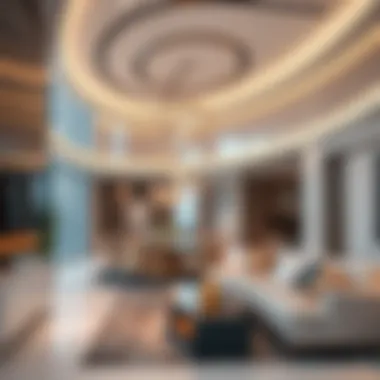
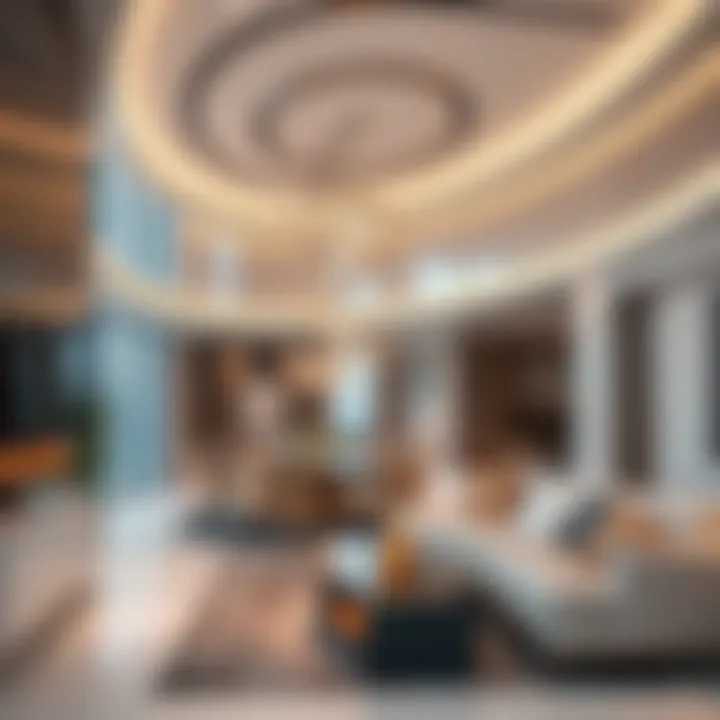
Energy efficiency in the Al Wasl Building is particularly significant given the extreme temperatures that characterize Dubai’s climate. The design incorporates various methods aimed at reducing energy consumption while enhancing occupant comfort.
- Smart Glass Technologies: The use of dynamic glass that responds to changing sunlight levels minimizes heat gain and glare while allowing natural light to filter into interior spaces. This reduces the need for artificial lighting and cooling.
- Improved Insulation: The building's shell employs high-performance insulation materials designed to maintain internal temperatures, which effectively lowers energy demand for heating and cooling.
- Renewable Energy Integration: On the forefront of environmentally friendly design, the utilization of solar panels on some parts of the building can supplement energy needs, pushing the envelope of typical construction standards.
These energy efficiency measures not only lower the operational costs of the building but also align with Dubai’s vision of becoming a hub for sustainable living. This aligns with broader goals toward achieving the Dubai Clean Energy Strategy 2050 which aims to diversify energy sources and reduce carbon emissions.
In sum, as the Al Wasl Building stands tall in Dubai, it does so not only as a spectacle of architectural innovation but as a beacon of responsible environmental stewardship that could influence future developments throughout the region. The commitment to sustainability and energy efficiency reflects a thoughtful approach to contemporary architecture, one that recognizes the imperative of eco-consciousness in its pursuit of grandeur.
Future Developments and Challenges
The future of the Al Wasl Building is both dynamic and pivotal, as it embodies the aspirations of a city known for its rapid transformation. This section delves into anticipated upgrades and potential challenges that may arise, shaping the building's role in Dubai’s architectural and cultural narrative. Understanding these elements is crucial not just for investors, but for all stakeholders involved in the real estate sector.
Anticipated Upgrades
There are several enhancements slated for the Al Wasl Building that aim to bolster its aesthetic and functional value. These upgrades might include:
- Technological Integration: Incorporating smart building technologies to improve occupancy experiences and operational efficiencies is high on the agenda. The integration of AI and IoT (Internet of Things) can not only streamline facility management but also promote sustainability.
- Public Spaces Remodeling: Plans to redesign public areas around the building signify an intent to foster community engagement. Creating beautifully landscaped parks or plazas contributes positively to the local environment and enhances the building’s appeal to potential tenants.
- Architectural Enhancements: Updating the facade with reflective materials to enhance energy efficiency while making a bold visual statement is an idea on the table. Such changes can enhance its recognition as a landmark, not just a building.
Added to this, the introduction of amenities tailored for well-being, like green roofs and wellness centers, speaks to a larger shift towards incorporating environmental consciousness into design.
"A building is more than just a structure; it’s a canvas for innovation and a reflection of community values."
These anticipated upgrades underscore a commitment to maintaining Al Wasl Building's status as a crucial element of Dubai's skyline while embracing future trends in architecture and societal needs.
Potential Challenges Ahead
While excitement looms around enhancements, challenges are part and parcel of any development journey. The Al Wasl Building is no exception. Some hurdles include:
- Market Volatility: The real estate market can be unpredictable. Economic shifts can impact property values, making it essential for investors to stay informed about trends and align their strategies accordingly.
- Regulatory Hurdles: Adhering to the evolving regulations regarding environmental standards and construction practices can pose complications. Compliance may require additional time and financial resources.
- Community Integration: As upgrades take shape, ensuring that they align with community needs is vital. Residents may have conflicting opinions about change, potentially leading to pushback against initiatives.
Navigating these challenges demands strategic foresight and adaptability from all involved parties. By preparing for potential setbacks, developers and investors can foster resilience in their plans for the Al Wasl Building, ensuring its evolution continues to align with Dubai’s towering ambitions while nurturing its rich history.
Ending and Reflections
As we draw this exploration of the Al Wasl Building to a close, it’s vital to reflect on the multifaceted importance this structure holds within Dubai's architectural framework. More than just another high-rise, the Al Wasl Building stands as a testament to innovation, culture, and urban development.
In a city that prides itself on pushing boundaries, the building exemplifies new-age architecture that merges functionality with aesthetic appeal. For potential investors and home buyers, this is more than an opportunity; it’s an invitation to engage with a landmark that encapsulates the spirit and ambitions of Dubai itself. The Al Wasl Building is not merely a structure of concrete and steel; it embodies the aspirations of a nation that continuously strives for excellence.
Key Takeaways from the Analysis
- Cultural Significance: The Al Wasl Building contributes extensively to the cultural landscape, drawing locals and tourists alike, and serving as a focal point for community interactions.
- Economic Implications: The ongoing real estate trends linked to this architectural marvel indicate a promising investment opportunity. Its location and design are sure to positively influence property values in the surrounding area.
- Technological Advancement: By employing cutting-edge materials and construction methods, the Al Wasl Building demonstrates a commitment to sustainability and energy efficiency, an aspect that resonates deeply in today’s environmentally conscious market.
Lastly, it’s essential for investors, real estate agents, and developers to understand the narrative that surrounds this building. Engaging with Al Wasl is akin to engaging with the very identity of Dubai—dynamic, ambitious, and deeply rooted in a rich history while simultaneously looking towards the future.
"Architecture is not about just buildings; it’s about the stories they narrate and the lives they shape."
By recognizing these elements, one gains a deeper appreciation of what Al Wasl represents, making it clear that this landmark will continue to influence and inspire for years to come.











